- Administrator
- Albums and Singles
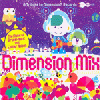 Likethe one done for Schoolhouse Rock several years ago, this tribute toDimension 5 Records features current artists covering (or remixing)educational children's songs. From army ants to using your imagination,their songs taught about the world outside (and inside) and made it fun.
Likethe one done for Schoolhouse Rock several years ago, this tribute toDimension 5 Records features current artists covering (or remixing)educational children's songs. From army ants to using your imagination,their songs taught about the world outside (and inside) and made it fun.Eenie Meenie
Dimension 5 Records, aka Bruce Haack and Esther Nelson, recordedchildren's records for nearly 30 years beginning in 1962. The '60strippy vibe carries through the album and meshes with a more modernhip-hop feel. The result is 72 minutes of sugary bubble-gum pop that'sconsistently great fun, which is educational too! Topics rangefrom spiders and how they spin their webs to Native Americans to "soultransportation" (which seems to be somewhere between daydreaming andmeditation).
The Apples in Stereo's "Liza Jane" is a sweet bit of country-tingedpop, and Fantastic Plastic Machine's energetic mix of seven differentsongs is a standout track. The compilation also features one-timecollege radio darlings Eels, Stereolab, and Beck lends a little starpower to the mix. As an added bonus, a portion of the proceeds fromthis album are donated to autism charities.
- Fantastic Plastic Machine, "I'm Bruce (Dimension 5 megamix)"
- The Apples in Stereo, "Liza Jane"
- Money Mark, "Spiders"
Read More
- Administrator
- Albums and Singles
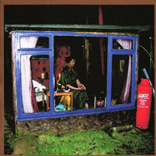 Before I found the solo releases of Heather Leigh, the only solo pedal steel player I was familiar with was American Music Club’s Bruce Kaphan. Where he built a bed of sound and fleshed out songs with single colour washes of sound, Leigh is an all-around more powerful, complex, and unreserved player. This is not only a reinvention of the instrument, a yanking from its subtle country roots, but also her best recorded work to date.
Before I found the solo releases of Heather Leigh, the only solo pedal steel player I was familiar with was American Music Club’s Bruce Kaphan. Where he built a bed of sound and fleshed out songs with single colour washes of sound, Leigh is an all-around more powerful, complex, and unreserved player. This is not only a reinvention of the instrument, a yanking from its subtle country roots, but also her best recorded work to date.
Her instrument’s aircraft birth drones fold and refold into a fairground frenzied alarm creating a positively blatant melody. By ragging out NY police sirens with her nails, the centre of attention slips easily between the two. Leigh’s trademark keen wails perforate the inflamed strained sound woozily creating vertigo tingles through the head. Like an inverse helter skelter the skittering sparks flit from the edge of a wall of lace and thunder. In parts of both the songs on Pot Baby her vocals have a more human, less obscured quality which slips between the higher and lower registers.
As these pedal engorgings die down into little thunders and emissions, a beautiful harmonica part begins. This is an incredible juxtaposition of sounds and styles, as drone improve hits the lone evening porch American folk sound. One is a muddied and restless mass of scrambled EQ and the other a sweetly free of effects and conventionally tuneful, fresh and human melody. An obvious pointer that I’m in love with a release is when I find myself wasting overcast afternoon’s imagining fantasy releases like a Heather Leigh solo harmonica CDR.
The return of the pedal steel sees notes turn crooked and becoming bent as seen through murky turbulent water. Her fingers must’ve been clawing and clambering over the steely strings to produce choppy chimes like these. As the piece progresses the music begins to take on the form of soft guitar work. The lonesome single notes and pale vocal seem like half-processed snapshots revealing a beauty sometimes unheard above or clearly through the squalls and thousand and one torrent of tones.
The second untitled piece begins as a lone vocal solo work, but soon she manipulates the music into an off kilter piano. The sound moves slowly as if on an angle, like taking the first curve of a mobius musical curve. Seemingly determined to keep out of the red, the queasy shaking sound begins to shape up like a furiously shaken hand held am radio. Soon slowing up, it becomes like a gorgeous desert dawn horizon loop. This is road music; music for the end of the road. For the first time on this CDR her steel shearing vocals make her sound like she’s capable of evil deeds. Razored vocals and bursts of operatic lines are doubled up and lag behind each other, leaving a strangled aura.
This release expands upon her second album, Give the Ashes to the Indians, and moves the sonic possibilities of a Heather Leigh release forwards several million miles. Her discography is now essential.
Read More
- Administrator
- Albums and Singles
 Mush'srecent reissue of Pedro's debut album brings the UK producer's subtle blendof downtempo beats and minimalist pop melodies to a stateside audience.If the album's nine tracks of superbly produced mood music aren'tenticing enough, Mush has been kind enough to throw in the "Fear andResilience" remix single for good measure.
Mush'srecent reissue of Pedro's debut album brings the UK producer's subtle blendof downtempo beats and minimalist pop melodies to a stateside audience.If the album's nine tracks of superbly produced mood music aren'tenticing enough, Mush has been kind enough to throw in the "Fear andResilience" remix single for good measure.Mush
I wrote about Pedro's single from Melodic (here) and I'm glad that the full length is finally available from Mush asPedro's sound is one I can always use in a bigger dose. It's a goodthing too that the single is included here as a second disc becausewith a nine track album where two tracks are taken up by a prettyunnecessary "Intro" and "Outro," the record would have felt a littlethin on its own. Luckily, it seems short because the music sandwichedbetween the opening and closing tracks is so good that I just wantedmore of it.
"Fear and Resilience" remains the strongest track with its adventurousmix of tones and styles that should work in harmony but require anexpert approach to composition to avoid feeling hacked together. Therest of the album doesn't play with quite as broad a sonic range, butwhat it lacks in bombast it makes up for in nuance. The tracks blendperfectly together too, creating a seamless long-player experience thatjust needs to be a little... longer. Whether Pedro is using simple,repeating piano figures or percolating electro beats, the songs allhave a kind of warm emotional resonance. This is the perfect kind ofrecord for Mush, a label that's released some of the best and warmestdowntempo instrumental records in the last few years. With theprevious single and now this album, Pedro's definitely roped me in. Now he just needs to get to recording something new.
samples:
Read More
- Administrator
- Albums and Singles
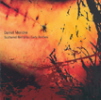 Daniel Menche gets a lot of respect from almost everyone who likes or makes noise. Perhaps it's because Menche has a sandwich named after him in the northwest; a sandwich so full of spice and flavor that it has caused sensory overload in some and sent others into a blissful and traumatic episode.
Daniel Menche gets a lot of respect from almost everyone who likes or makes noise. Perhaps it's because Menche has a sandwich named after him in the northwest; a sandwich so full of spice and flavor that it has caused sensory overload in some and sent others into a blissful and traumatic episode.It is a fact that Daniel Menche's music has more flavor than the leading noise brand, his work more satisfying, spicy, and filling than name brand competitors. His determination to stick out, to provide dynamic energy and musical play are all present, even on these early recordings.
Soleilmoon
As far as I can tell from available discographies, Daniel Menche's career stretches back at least 13 years. What appears to be his official website features a Bon Scott quote and his music is often a strange amalgam of distended samples, fractured machinery, and frightening ghost-talk. Over a decade of making music and Menche is still altering and perfecting his craft. More so than some, his work seems especially the work of a true craftsman. According to the liner notes on this collection from Soleilmoon, Menche likes to approach his work in the same way an artist or an author would approach an ambitious project of some significant size or grandeur. His meticulous attention to detail, his refusal to allow any part of his music become redundant or unnecessarily bland makes him so good at what he does. These are not walls of static, these are not tracks full of hacked up and unintelligible samples; these are, instead, compositions with a wide range of flavors, rhythmic devices, and surprises. Daniel Menche apparently had a sandwich named after him because he just wasn't satisfied with the ingredients he was being served. This sort of attitude's built one hell of a tasty record.
Scattered Remains: Early Rarities collects a series of rare or out of print 12" records, 7" releases, and compilation tracks from 11 different labels. Unlike Menche's full-length work, these individual tracks are geared to be complete unto themselves, not part of some larger picture. This makes listening to portions of this rather large double CD set far easier; there is no need to listen to the entire disc to fully appreciate the power of Menche's compositions. On each track that power is evident as it pours from the speakers, sometimes aggressively and sometime slowly. A track like "Here Is Proof That You Are Not a Ghost" represents Menche's ability to burn slowly, to accumulate tension to the point of an orgasm, and then let it recede slowly, exquisitely, like the most comprehensive and breath taking comedown ever. He mingles disparate ideas, harsh and soft noises, to stunning ends. As soon as a track feels like it might end in the hands of another composer, Menche suddenly begins reconstructing what he had just destroyed. New peculiarities begin to sizzle and rise to the surface and before anything can be easily digested, Menche has, seemingly through magic, constructed a new edifice of sound. Hearing this process is a pleasure in and of itself, but being in its storm is the biggest draw. Menche has a way of making his work labyrthine; it is quite easy to get lost in his sounds. They always bubble or shiver with life, exploding with the kind of energy I'd expect from a catastrophic solar event. When sounds moan, they feel genuine, like a breath escaping the artist.
But, before moving on, Menche always has a way of snapping the whole work together, of bringing everything together for one final blast or uneasy movement. This music demands attention and is not just for those satisfied with wandering. This requires close listening to be enjoyed completely.
No two tracks repeat anything on either of these discs, unless, of course, Menche decided to tie some thematic between the two. His process, his manner of executing sound keeps each piece fresh and surprising. There are peaks and valleys in his work, a clear sense of pacing, tension, and dynamic play. What separates Menche from the boys is his dedication to heterogeneous listening experiences; there is absolutely no reason to think that pure sound is pure noise and, as such, Menche likes to layer and shift new sounds throughout every track. No two seconds are ever the same and, it would seem, that Menche refuses to rely on anything like loops or prerecorded samples. The liner notes speak of Menche's refusal to use a computer during these early stages and the joy he felt learning how to work with sound. I've seen pictures of his live performances and I can only describe them as shamanistic.
It makes sense that Bon Scott's quote graces his website. Menche's music comes from the body, from the heart, from the blood that runs through him. It shows in the power his music exudes and in the care taken with every track. His work is austere, in some respects, relying on itself and not some flashy or shocking ornamentation to help it along. There are no violent sex references on this that I can find, no need for grotesque imagery, and no sign of gonzo theatrics in what Menche does. There's just the purity of his work and the fact that he has more going for him as a noise artist than just about anyone else that might be hip enough to get mentioned for their brutality or their sheer dedication to complete chaos. I find those groups entertaining, too, but Menche's work is absolutely mesmerizing. When he calls a song "Unholy Cricket Fuck," there's a good goddamned reason for it. Menche is exacting, pure, and absolutely dedicated to what he does. He's a master chef amongst a gaggle of brown-bagging school boys, a chef with a bag full of all sorts of ingredients most people don't even know exist.
samples:
Read More
- Administrator
- Albums and Singles
 This split from two of the newest wave of black metal was originally released on LP two years ago. It quickly sold out but thankfully has been reissued with four extra tracks. Both Malefic and Wrest’s status have grown immensely since the original release thanks to their recent collaborations with Sunn O))) and demand for their own work has increased accordingly. Although neither artist sounds remotely like Sunn O))), both have far more in common with Norwegians who hang around churches with Zippos.
This split from two of the newest wave of black metal was originally released on LP two years ago. It quickly sold out but thankfully has been reissued with four extra tracks. Both Malefic and Wrest’s status have grown immensely since the original release thanks to their recent collaborations with Sunn O))) and demand for their own work has increased accordingly. Although neither artist sounds remotely like Sunn O))), both have far more in common with Norwegians who hang around churches with Zippos.
Battle Kommand
The first seven tracks are devoted to Malefic’s Xasthur. I loved his vocals with Sunn O))) but here they don’t sound as powerful as they get a little lost in the guitar noise and blast beats. Still, the songs are heavy and reeking of menace. The tracks from the original release are good but for me the three bonus tracks are the most interesting. The instrumental “Achieve Emptiness” is a moody keyboard piece that has the potential to burst into something amazing but Malefic just seems to abandon it at the end which is a shame. My disappointment was soon obliterated with the mighty “Telepathic with the Deceased” which absolutely slays. The vocals are extraordinary and the guitars have more beef to them than on other tracks. What makes it more impressive is the fact that it is a rehearsal recording, not a finished piece. Xasthur finish off in style with a Katatonia cover and leaving Leviathan with a lot to live up to.
I found that Leviathan didn’t quite manage to reach the intensity that Xasthur achieved. In fact, even as far as Leviathan material goes, this isn’t the strongest set of songs that Wrest has written. “The Remotest Cipher” is the best of the three tracks present on the CD, in particular the last three minutes or so of it when the synth comes to the front really floated my boat. The album finishes on a bit of an anticlimax with Leviathan covering Judas Iscariot’s “Where the Winter Beats Incessant.” Wrest musically doesn’t capture the darkness of the original, there’s something lacking. At least the vocals sound like he’s choking on something unpleasant (which is a good thing).
This split album is a fine entry point to both artists' work, but, aside from one or two tracks, doesn’t represent the best work of either of them. However I’m hoping that the increased interest in black metal will result in more hard to find releases getting a reissue like this so I can fill the holes in my collection.
samples:
- Xasthur - Conjuration of Terror
- Xasthur - Telepathic with the Deceased
- Leviathan - The Remotest Cipher
Read More
- Administrator
- Albums and Singles
 I'm not used to Ms. John Soda feeling fuzzy. Their sound tends to be more crisp, precise, and often coolly (if not coldly) digital, as if you could feel the ones and zeros scraping past your ears. But "A Nod on Hold," the opening song from Notes and the Like, is teeming with a bubbly electronic bed, couched in a serenade of strings. It's fluffier and warmer than usual for the band, who espouse a pop-electronic ethos while still clinging to a rock ideal which helps to make their songs more angular.
I'm not used to Ms. John Soda feeling fuzzy. Their sound tends to be more crisp, precise, and often coolly (if not coldly) digital, as if you could feel the ones and zeros scraping past your ears. But "A Nod on Hold," the opening song from Notes and the Like, is teeming with a bubbly electronic bed, couched in a serenade of strings. It's fluffier and warmer than usual for the band, who espouse a pop-electronic ethos while still clinging to a rock ideal which helps to make their songs more angular.
The Couch/Notwist hybrid duo return to form throughout the rest of the album, though "A Million Times" might be an additional glitch of fuzz on the album. Stephanie Böhm's wispy vocals are the centerpiece of each song, adorned elegantly by Micha Acher's playful electronics. Acher's machinations seem to operate independently of Böhm's voice, as if the one or the other was unscripted. Yet the two intertwine seamlessly and inexplicably in each song. Böhm's vocals are at their best and breathiest on "Hands," one of the albums two anthems (I'll let you find the other). Two-thirds of the way through the song, all the music dissipates except for the thematic siren-like notes and the vocals. This carefully-measured moment crystallizes how delicately Böhm enunciates her words and how perfectly Acher props his partner with articulate foundations of sound. Rockier numbers like "Scan the Ways," "No. One," and "Outlined View" are a pleasant obverse to the poppier bits of the album, albeit it an expected one.
Ms. John Soda's first album contained the same dichotomy in approximately the same proportions. The first few seconds of "No. One" (re-recorded from the While Talking EP) remind me of a Rodan song, but I can't recall which one. The two bands are hardly relatable at first thought, but the more I listen, the more I can hear Tara Jane O'Neil's earlier and uncultivated voice in Böhm's. The previously-released "Sometimes Stop, Sometimes Go" (also from the While Talking EP) still stands out as a highlight and you begin to understand why they included it on this album. It features both modes of Böhm's vocals: the spoken (droll, heavy) and the sung (light, ethereal even), wherein the contrast of the two is where the success of the song hides. "Plenty Of," the album's closer, is marked by a somber tone absent from the other songs. The strings lament, Böhm exhales monotonously, and Acher, always disciplined, restrains himself from doing too much with the parting coda. It's a true goodnight ballad, ending suddenly without significant closure.
Does it end with a kiss, a silence, or a phonecall tomorrow? I can't quite tell, but the question still resonates and I try to listen intently for the answer each time.
samples:
Read More
- Administrator
- Albums and Singles
 Kamerman finds the vein and plots a course for the dark arterial parts that elude many other artists. These two pieces are messily organic noise improvisational / compositional voyages that map out the kind of areas that is often alluded to but rarely visited.
Kamerman finds the vein and plots a course for the dark arterial parts that elude many other artists. These two pieces are messily organic noise improvisational / compositional voyages that map out the kind of areas that is often alluded to but rarely visited.
The screeching base of the CDR’s thirty minute opener, "For Sarah Schwartz—the Black Horse Troop was the Fairest of the Fair," hides a prayer call style loop inside the twitchy layers. Within the primitive high end noise factor lays the strong idea of some form of field recording with a moving undercurrent of hothouse air. The building heat-sucking beat built from a sweat soaked wobble board drives the piece in endless circuits building uneven pressure and overt tension. Occasionally splitting this is a lizard’s tail whip (an organic sound with digital edges) which in its trail leaves the expectation of unexpected sounds around the next corner.
The fluttering sawing motion leaves tiny shifts and fluctuations in the sound, sometimes steady and sometimes drifting. Brief passages of acoustic plucking move under the ridged and ribbed soundscapes. The near industrial vibe of these steadier movements adds to the darker aspects in Kamerman’s palette. Even with this muffled march the music around it is hacked and Stanley knifed into grey ribbons of whispery percussion; a berserk remote control parade.
"Freedback 1 (Waverley Place)," the second shorter piece, reveals a more delicate but more unsettling closer miced affair. There's an unpleasant delicacy in the frequencies that seems to scratch at balance and awareness when played extremely loud. The long high whines could be construed as creepy but instead appear more like the audible radar surveying the area. The slide of signals back and forth becomes either a wash of breezes or a painful drill or combined and relatively harmless tones.
Read More
- Administrator
- Albums and Singles
 Front man for The Meatmen and almost a founder of Touch & Go records, Tesco Vee is probably most famous for his rude posturing and sense of humor. Before The Meatmen had recorded Crippled Children Suck or War of the Superbikes he was in a noisy outfit by the name of Blight. This 20 track release on Touch & Go covers everything they released and performed during their one year existence.
Front man for The Meatmen and almost a founder of Touch & Go records, Tesco Vee is probably most famous for his rude posturing and sense of humor. Before The Meatmen had recorded Crippled Children Suck or War of the Superbikes he was in a noisy outfit by the name of Blight. This 20 track release on Touch & Go covers everything they released and performed during their one year existence.
Touch & Go
TescoVee enjoyed being shocking, so there's little surprise that heparticipated in a band like this one. Blight was a quartet with thebasic punk setup: drums, bass, guitar, and mumbled, screamed, orotherwise unintelligible vocals. What I can make of their lyrics hassome political bend to it, but more or less they all focus on how fakethe world is and how everyone needs to wake the hell up. In 1982 thismight have been exciting to some kids in the middle of Lansing,Michigan, but their legacy doesn't amount to much in the scheme ofthings. Blight is big on bass, letting it stand out over the rest ofthe music, almost like an instrument of dance that is phased out andwarped just enough to make it "edgy". In fact, the contrast between thebass and the rest of the band is corny, the bass sounding like itbelongs in porn venues the world over. The guitars are sheets of noiseand feedback, with a hint of melody and rhythm. Think Joy Division's"Atrocity Exhibition" spread out over an entire album, but without aninteresting singer or a drummer who could do anything beyond using hishi-hat in the way every fifth grader is familiar with because of AC/DC.Every now and then Vee pulls out an "electronic trumpet" and bleats outa few notes here and there just to break up the monotony, but it doeslittle to save what amounts to a collection of fairly poor songs.
Evidently Blight's big claim to fame is that they opened for the Dead Kennedy's once. This already sounds like a small town story about some kids who almost were, I know, but that's about all there is to say about the live recordings that are included on this disc. The band's self-titled EP is included on the CD along with some four-track demos and their July 29th appearance that lasted a grand total of 16 or so minutes. The liner notes point out that the crowd hated the band, probably because of Vee's opening commentary and his tendency to sound a bit like a rock martyr. On top of that, the band sounds like a wall of mud with drums behind it. In a fashion that stays true to their recorded output, Blight simply pound through some noise and plodding bass parts until they reach the end and do it all over again. The bass parts that had made some of their recorded material at least tolerable is noticeably and painfully absent. In the end, Vee's moaning and screeching vocals sound contrived and the whole mess comes across has some failed experiment in noise-based rock 'n' roll. The only exception is during "The Dream is Dead," where the band suddenly comes to life with a version that sounds better live than it did in the studio. Everyone has a good day, I suppose, but in Blight's case, they had about two good minutes.
samples:
Read More
- Administrator
- Albums and Singles
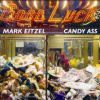 American Music Club singer/songwriter Mark Eitzel's latest solo effort is a gentle album full of peaceful melodies, lyrics with an obscure beauty, and Eitzel's warm and softly whispering vocals. Gentle and peaceful though it might be, Candy Ass isn't milquetoast.
American Music Club singer/songwriter Mark Eitzel's latest solo effort is a gentle album full of peaceful melodies, lyrics with an obscure beauty, and Eitzel's warm and softly whispering vocals. Gentle and peaceful though it might be, Candy Ass isn't milquetoast.This time around, Eitzel lays rapid thumping beats under those soft melodies. Eitzel's lyrics are always as troubled as they are poetic; like the lines "What's going to turn me into an honest man/What's going to scare the ghost out of my soul" from "Roll Away My Stone." With Eitzel, it's not always clear on the surface what's happening in the stories woven into the songs; "My Pet Rat St. Michael" begins as an owner's concern over his pet, but gradually the listener becomes aware the owner is projecting his own hopelessness onto the rodent; he is "the tired swimmer who can no longer see the shore." The title of "A Loving Tribute to My City" proves to be ironic; the little girl's vocals are blurred and barely discernible but she speaks of finding an abandoned body, and when she mentions "giant beautiful golden gates," the effect is ominous rather than hopeful. Another line from "Roll Away My Stone" sums up the overall impression of things hidden in the depths: "Your love is a bell that rings underneath the ocean."
Candy Ass's gentle melancholy makes for an enjoyable experience and looking beneath the surface of the peaceful melodies is darkly rewarding.
samples:
Read More
- Administrator
- Albums and Singles
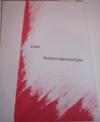 The latest release on Aranos’s own label is another hour of quality from one of the most easily identifiable artists on earth. It’s no departure from his previous output, those familiar with his work won’t be surprised with any of the pieces, but the songs here further refine his methods and skills.
The latest release on Aranos’s own label is another hour of quality from one of the most easily identifiable artists on earth. It’s no departure from his previous output, those familiar with his work won’t be surprised with any of the pieces, but the songs here further refine his methods and skills.The first half of Banished in Spattered Relish consists of shorter, more musical pieces. On many of these tracks, Aranos messes around with the listener by either confounding things musically or emotionally. On the opening track, for example, “Shooting Toadstools on Shinobazu Plain,” he mixes moods splendidly by using recordings of a woman’s voice: sometimes she is laughing and other times it sounds like she’s moaning uneasily. The effect is disconcerting. It reminds me a lot of Nurse With Wound’s recent Echo Poeme series but better. Many of the tracks shift in mood during their course, most of the time taking a turn for the more sinister. Aranos’ voice is fantastic on a song like “Inhaling Carpet,” where he sounds like a narrator for children’s audio books doing his rendition of the Giant (of Beanstalk fame). That kind of voice that in other situations would be almost ridiculous but at the time makes you duck under the covers.
The latter half of the record consists of three lengthy pieces. “Interviews with the Almighty Yayu” is a soft, shimmering drone with little pops and glitches every once in a while which appear to be happy accidents from the equipment used. This fades into “Worldliness Pales Hereabouts,” where Aranos sings over a sharp violin sound. It's something that wouldn’t normally sound out of the blue, but everything in the song pans from left to right at different times. It is like an audio version of a drunken stagger or a lilting ship. I hate the term “studio as instrument,” but here it is apt as Aranos is one of those artists that does not see the recording studio as a means of making a document but as a tool separate to documentation.
Banished in Spattered Relish is a decent album. It’s not a huge step forward for him; when I first got into his music I was expecting each release to further push the limits of song. However with each release I’ve found little evolution in terms of his songwriting even though one album could contain many different styles and musical traditions. Every time a new release lands in my lap I keep expecting a metamorphosis that is never there. In saying that, he is great at what he does and no album, including this one, ever disappoints me. I’m just never surprised.
samples:
Read More
- Administrator
- Albums and Singles
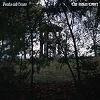 Thesecond album from these Pennsylvanian chaps is full of chunkyblues-inspired riffs. Not in a nasty, necrophilia-tinged way like LedZeppelin but more in a Sabbath-style with a nod to past greats. While Iappreciate the straightforward rocking and absence of wank solos,unfortunately there’s not much to make Pearls and Brass anything morethan just another generic stoner rock band.
Thesecond album from these Pennsylvanian chaps is full of chunkyblues-inspired riffs. Not in a nasty, necrophilia-tinged way like LedZeppelin but more in a Sabbath-style with a nod to past greats. While Iappreciate the straightforward rocking and absence of wank solos,unfortunately there’s not much to make Pearls and Brass anything morethan just another generic stoner rock band.Infairness to the band, they are extremely tight. They've obviously honedtheir playing down to a fine art. The rhythm section is powerful;Martin’s drums sound like Mike Tyson is punching the beats into them.The bass and guitar sometimes mush together into a lump of chugging butit sounds good. As I mentioned, there a lot of blues in theirmusic, with Huth’s guitar in particular erupting in many nice littlelicks. “Pray for Sound” being the highlight of the album and a goodexample of Huth’s playing, however, he seems to be stuck in a guitar rutas there’s not much variety on The Indian Tower. Most of the songs sound very similar with these guitar lines. There are a couple of tracks that steer clear of the same old riffs such as “I Learn the Hard Way,” which has some delicious fingerpicked acoustic guitar. The lyrics aren't the best I've ever heard but they fit with the music.
Pearls and Brass won’t be praised as being saviours of rock for this album. The Indian Tower is a good, if run-of-the-mill, album. There are no surprises on it but serves its purpose in stimulating rhythmic head nodding. That's about all it will stimulate.
samples:
Read More

